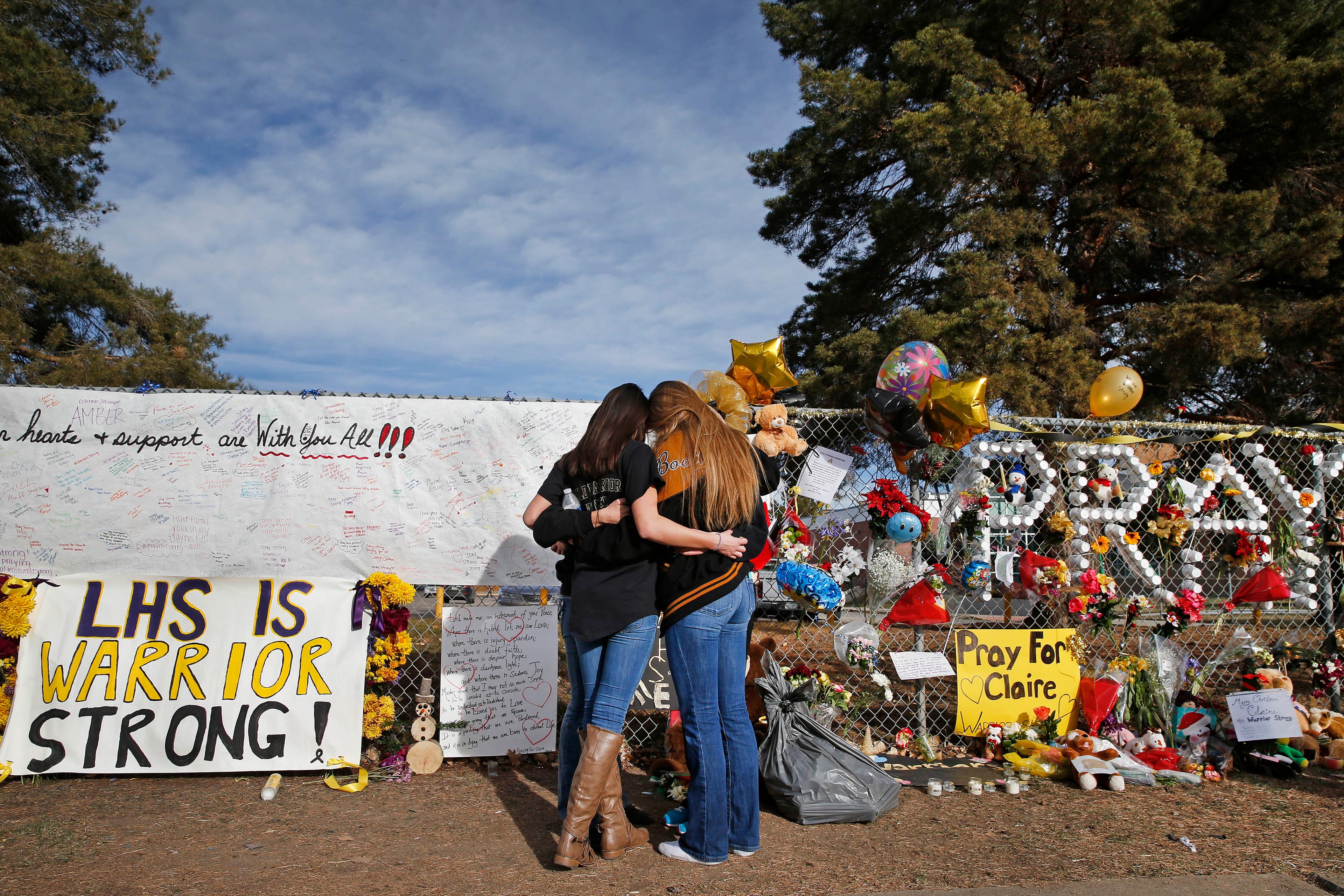
Littleton Public Schools officials admit they missed warning signs leading up to a murder/suicide at Arapahoe High School two years ago. The conclusion was part of four separate reports released Monday today as part of a settlement with the family of Claire Davis. She was the student who was killed that day by in 2013.
- Download and read all reports from the LPS site here
- Read the superintendent's report here
- More CPR News reporting on Arapahoe High School here

How the school district missed warning signs about gunman Karl Pierson:
When put together, in retrospect, there was a trail of evidence that he was a serious threat. For instance, Pierson’s father believed his son had become proficient in shooting after taking classes. Yet during a later threat assessment, the school district never followed up with parents about access to weapons.
Pierson was making bizarre statements during the first week of school in 2013 -- they were concerning enough that a teacher sought out others who knew Pierson, but there was no documented follow up.
Later, Pierson made an obscure reference about the mass shooting at Columbine High School to a teacher after failing a math test. The connection was not made at the time.
Pierson was later kicked off the debate team by the coach, and he was overheard later saying he wanted to quote “kill that guy.” Pierson was also seen researching guns on his personal computer in October two months before the shooting.
The problem is, these reports say, the district didn’t have the systems in place to have all the information present before assessing his threat to students and teachers.
Why Pierson was deemed a low risk threat by the school:
One of the expert reports that was released cities the school district’s “circular logic” in how the they assessed the threat. Pierson was deemed low risk, based on insufficient and incomplete data, and so additional data wasn’t gathered because he was labeled low risk. And one of the reports found that no explanation was given for the low risk designation.
Excerpts from Pierson's diary were contained in the reports:
They give you a sense how difficult identifying high risk threats are. Here’s what Pierson wrote less than a month before the shooting: “It’s weird going through life knowing that in 19 days, I am going to be dead. That makes school more boring, work torture and everything I love to do a little less fun. The hardest part is not being able to tell anyone. I can’t just say ... I’m going to shoot up my school soon. I need to make sure that kind of stuff doesn’t show up.”
He later writes that he likes the pistol grip on the new shotgun he’s purchased, and he brags that his mom doesn’t know he has a gun.
But his diary was not discovered until after the shooting.
How the school district has responded since the shooting:
The district admits that it missed many warning signs leading up to the shooting. And they have overhauled their threat assessment process. Officials now meet every week to discuss all threats and suicide assessments.
The district has also beefed up its staff of psychologists and social workers. And there are now police officers at every middle and high school.
The superintendent of Littleton Public Schools wrote that it’s vital that every school district improve and review their process for gauging threats. But he also wrote that despite those efforts, not all violence can be foreseen and stopped.
What the parents of the victim, Claire Davis, are saying:
In a message in one of the reports, they write that they entered arbitration with the school district in order to make this information public, so that other districts can improve their response to threats:
The current state of our society demands that it’s time to change our thinking about the role schools should play in the lives of students in crisis. Schools are the first place in most children’s lives where they learn to socialize and it should be one of the first places where children learn to practice respect for themselves as well as others. In many, if not most cases, helping troubled youths with unmet emotional needs costs nothing more than some time given by a caring administrator or teacher to lend a helping hand, share words of hope and encouragement, and open the door to other available resources. The goal of this report and the entire arbitration process was to encourage this change in thinking about our public schools – to challenge parents, administrators, teachers and legislators to embrace a caring, tolerant and compassionate culture that empowers our schools to intervene and help kids in crisis.









